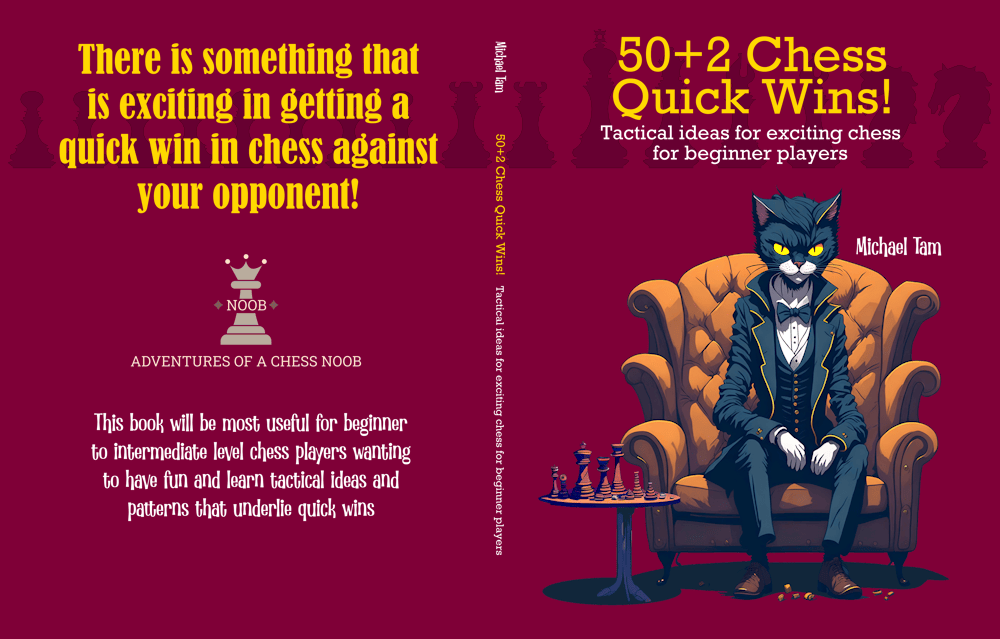
Vienna Game: Zhuravlev Countergambit | ROOK vs BISHOP! 🦒♟️😜
#vienna #zhuravlev #giraffe #brilliant
In the standard way of assigning relative value to pieces, the rook is ascribed a value of 5 pawn-equivalents, substantially more than the 3 pawn-equivalents of the bishop. And it is certainly true as a heuristic that it's usually better to have a rook than a bishop, if it came to a choice in a game.
However, what is true as a generality, is not necessarily true in a specific position! In some settings, we understand this implicitly and intuitively; a pawn that is about to promote in an endgame will often be worth more than any piece other than the king. In other settings, this notion can be a more subtle idea, with the relative value of a piece dependent on mobility, and how "difficult" it may be to coordinate the pieces. The "difficulty" of a position to human minds is not something that is easy to quantify, especially with computer analysis. This takes judgement and reflection when using engine-aided analysis; for instance, considering the number of "good moves" vs "bad moves" in a position, how intuitive the good/bad moves are, and the impact of a mistake.
In the latter half of this game, I started with an inferior position according to the engine, with a bishop and a rook vs my opponent's rook pair. One would often think that the rook pair should be winning! However, as we shall see, the bishop can have advantages with the greater aggregate mobility of the pieces, while rooks can be awkward to manoeuvre when there are still many pawns on the board. Let's go!
I had the White pieces in this game against my opponent from Yemen with the Black pieces. I played the Vienna Game, to which Black responded with the uncommon Zhuravlev Countergambit (1. e4 e5 2. Nc3 Bb4). The Zhuravlev can be quite tricky, but it's not a great response for Black unless they are familiar with it. White has many responses: Nd5, d4 and Nf3 are all great responses that Stockfish approves of. However, the move I prefer is what I've referred to as the "Giraffe-ish Counter-Countergambit", (3. Qg4). As Black has moved out their king's bishop early, we play a "Giraffe Attack"-like move (queen goes to the same square against the Anderssen Defense, where Black plays 2... Bc4) placing pressure on the g7-pawn. According to the Lichess community database, this move occurs only 1% of the time against the Zhuravlev, the TENTH most common move, but it has the highest win ratio of 59% (White) vs 37% (Black)!
In this game, Black blinked, and we won a concession when they played (3... g6). This weakens their kingside pawn structure, and we have an immediate potential attack by moving the White queen to the parking square in the Giraffe, (4. Qg3). There is a possibility of Qxe5+ which comes with an absolute fork of Black's king and h8-rook!
Black trades off their Zhuravlev bishop for my queen's knight (4... Bxc3 5. dxc3), a relative inaccuracy, and then shores up defence of the e5-pawn with (5... d6). This makes sense. However, here we have another tactic that we can use from the Giraffe, which is (6. Nf3), which we then seemingly sacrifice with (7. Nxe5!!), a brilliant move! It’s not a real sacrifice as if Black attempted to capture with dxe5, we have the previously identified Qxe5+ king-rook fork!
Black responds with (7... Qe7) and although I theoretically knew that there should be a way out of this, I psyched myself out when I couldn't see it, and then convinced myself that I'd blundered! The correct move is (8. Ng4 Qxe4+ 9. Ne3), with the knight blocking the Black queen's attack and putting it at risk of being harassed by pieces as I develop, winning tempo! In the game, I thought that the only way to capitalise on the position was to sacrifice the knight on f7 or g6... Bad thoughts! I eventually played (8. Nxg6??) after one-and-a-half minutes, opting to damage Black's kingside defences.
By move 10, the dust settles after the opening exchange, and the queens are off the board. And so, we approach the middlegame where I'm obviously down a piece, but perhaps have some very slight advantage in development and still having the bishop pair. [-3.4] Trying to win from a losing position is its own fun!
The middlegame proceeds and I'm not doing great. On move 22, I make a tricky clearance sacrifice and what is fascinating is that on the following turn, Stockfish recommends for the first time in this game for Black to sacrifice one of their rooks for one of my bishops. Black of course, choses not to do this unintuitive exchange. However, as a result I recapture one of Black's pieces for "free" and we're back to piece equality, though Black is still up a point of material.
On move 29, we enter the endgame, Black with their rook pair and White with rook and bishop. As the rooks can only move in the cardinal directions (up, down, left, right), a pair of rooks have no access to diagonals. On the other hand, my bishop and rook as a UNIT, can move in both the cardinal directions and diagonals. The rook pair would definitely have the advantage in an open board, but with 9 pawns still present, and only two full open files, coordinating the rook pair can be very tricky indeed. Forming a battery, for instance, is difficult to achieve. Indeed, on move 31, Black forms a battery on the h-file, but Stockfish rated this a mistake with the evaluation almost back to equality [-0.4]!
If you look at the moves from around move 32 to the end of the game, one can see the easy synergy between the White bishop and rook, dancing around Black's e5-pawn, which obstructs the mobility of their rook pair. On move 38, once again Stockfish identified that Black's best move was to trade one of their rooks for White's bishops, transforming the endgame to an equal, and probably drawing, rook-and-pawn endgame.
Unfortunately, Black didn't see a dangerous situation that their king had found itself in. White had three adjacent "diagonal attackers" (bishop, king, pawn) on the fourth rank, effectively creating a forcefield blocking access to the fifth. My rook created a forcefield on the seventh rank. In essence, despite the "open" looking board, Black's king was stuck on the sixth rank! Black decided to start capturing my queenside pawns, and in doing so, hung [+M2]!
This was a very beautiful checkmate; first with (39. g5+) and the king is forced to a single escape square (39... e6). And then, the killing blow (40. Bf5#)! The White rook controlled two borders of the square 3x3 squares around the Black king, the White king and pawn controlled the opposite corner, and the bishop sniped down the diagonal, while simultaneously giving x-ray defence of the White rook. GG!
The big takeaway from this game is to not assume that you’ve lost if the piece balance is such that you have a bishop, while your opponent has a rook. A bishop can sometimes be better than a rook, especially when there's still a lot of pieces on the board!



